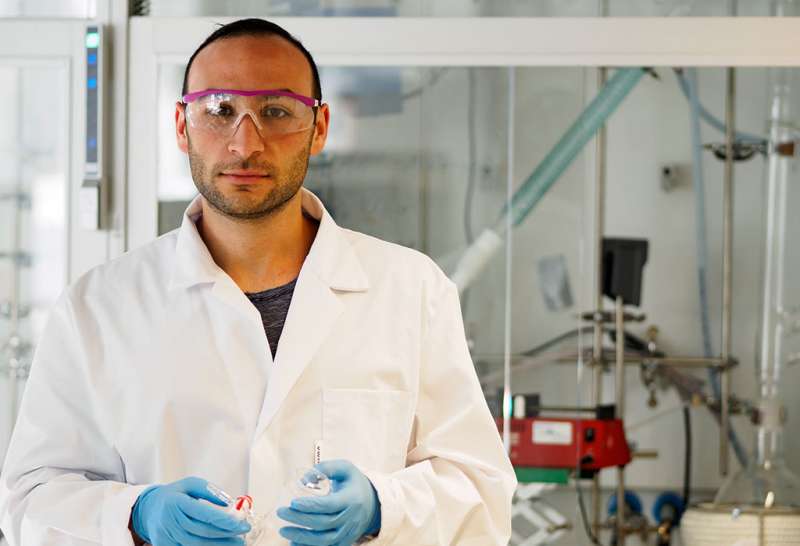Making composite material smart with precious metal

Doping polymer brushes with gold nanoparticles results in a switchable composite material which changes its thickness depending on the pH value. The research by physicists at the TU Darmstadt, published in the journal Soft Matter, could be used to design chemical nanosensors in diagnostics or environmental analytics.
Polymer brushes are chains of large molecules which are densely grafted on a surface. Due to electrostatic forces, the chains extend from the surface and form a fur-like layer with a thickness of several hundred nanometres. Currently, research focuses on the design of polymer systems responding to various environmental stimuli such as pH value, temperature or specific biomarkers. Physicists at TU Darmstadt and TU Berlin have shown for the first time how the thickness of a polymer brush can be made switchable by incorporating pH-sensitive gold nanoparticles.
"The combination of polymer chains and gold nanoparticles is promising, especially in medical diagnostics or environmental analytics," says Dikran Boyaciyan. The 30-year-old Ph.D. student works in the "Soft Matter at Interfaces" group led by professor Regine von Klitzing.
"This technology is still at an early stage of development. The primary objective is how the interaction between polymer systems and nanoparticles may be tuned and calibrated in a controlled environment," Boyaciyan explains. Smart polymer materials could be used in chemical nanosensors which report on toxins or cancer cells, monitor parameters of organs or target the release of drugs inside the human body.
Boyaciyan tested two types of pH-insensitive polymers with respect to their prospect for long-term use as sensors: the non-ionic PNIPAM and the cationic PMETAC. The former was found unsuitable because of gold particles being washed out from the brush at high pH values. In the cationic PMETAC brush, however, the gold particles adhered unaffected by pH changes.
Furthermore, Boyaciyan was able to show how to make a reversible pH-switchable composite from PMETAC by incorporating gold nanoparticles and how its complex formation works. In an acidic environment, the particles lose their charge and both particle-particle interactions and particle-brush interactions occur. This leads to a swollen brush because of its chains being less confined.
In contrast, an alkaline environment causes negative charges on the particles and interactions with the positively charged brush are preferred. The chains collapse resulting in a thinner brush layer.
Because of the thickness change also influencing the spectral composition of the reflected light, the material could be used as colorimetric nanosensors. Due to the extremely small dimensions and possible coupling with a miniaturized laser and spectrometer the composite could, in future, be applied in lab-on-a-chip systems or even within the human cell.
More information: D. Boyaciyan et al. Making strong polyelectrolyte brushes pH-sensitive by incorporation of gold nanoparticles, Soft Matter (2018). DOI: 10.1039/C8SM00411K
Journal information: Soft Matter
Provided by Technische Universitat Darmstadt




















